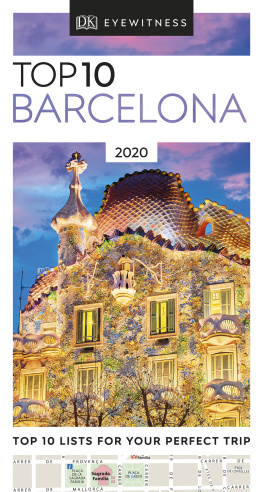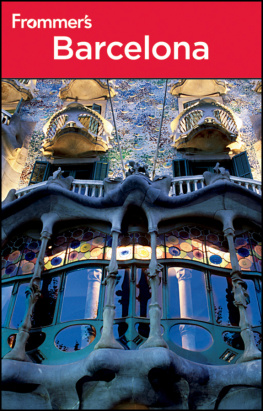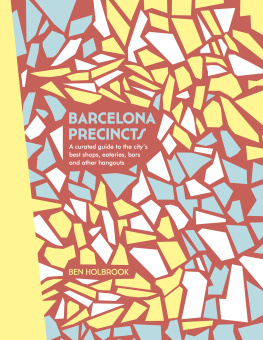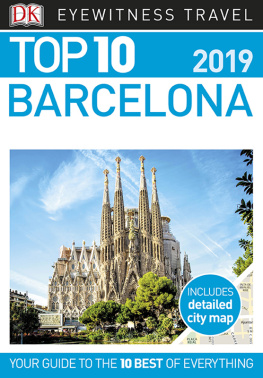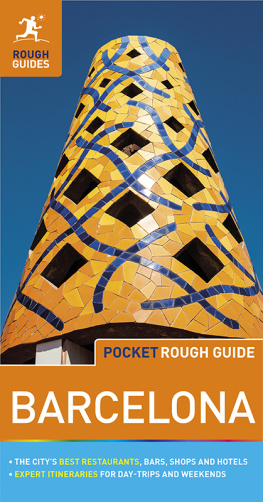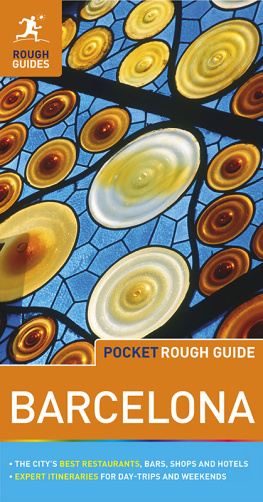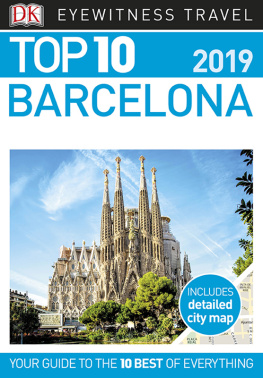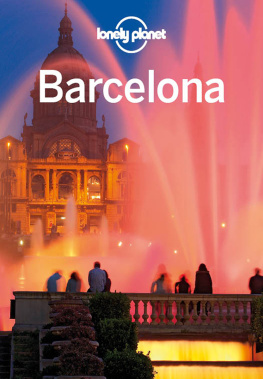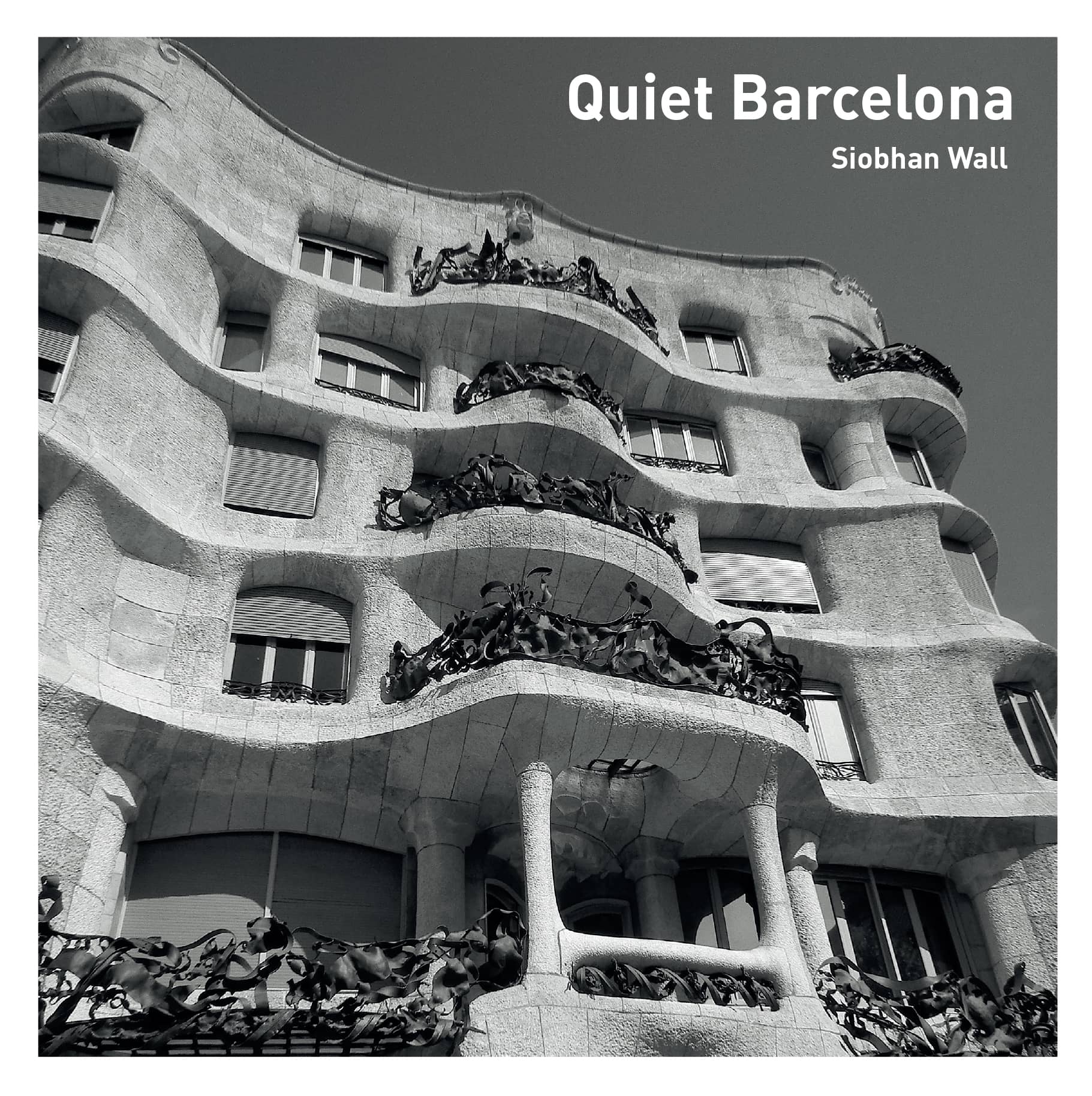Quiet Barcelona
Siobhan Wall
with Cristina Jimnez-Peralta and Jaume A

Frances Lincoln Limited
A subsidiary of Quarto Publishing Group UK
7477 White Lion Street
London N1 9PF
Quiet Barcelona
Copyright Frances Lincoln Limited 2016
Text Siobhan Wall
Photographs Siobhan Wall, Cristina Jimnez-Peralta and Jaume A except:
Gran Hotel La Florida
First Frances Lincoln edition 2016
All rights reserved.
No part of this publication may be reproduced, stored in a retrieval system, or transmitted, in any form, or by any means, electronic, mechanical, photocopying, recording or otherwise without the prior written permission of the publisher or a licence permitting restricted copying. In the United Kingdom such licences are issued by the Copyright Licensing Agency, Barnards Inn, 86 Fetter Lane, London, EC4A 1EN.
A catalogue record for this book is available from the British Library.
Digital edition: 978-1-78101-225-3
Softcover edition: 978-0-71123-812-1
COVER Casa Mila, Passeig de Grcia; Parc del Laberint dHorta
Introduction
Barcelona is an enchanting city. With its historic museums, stylish galleries, medieval churches and secret squares, it is a very rewarding place to explore, and there are wonderful discoveries to be made around every corner. However, Barcelona is the fourth most popular tourist destination in Europe and in many ways has become a victim of its own success. So many people flock here to see the ancient Barri Gtic and Gauds Modernista architecture that it can be hard to find peaceful places off the beaten track, and it can often be difficult to get away from the noise of the traffic and the crowds. Nevertheless there are many tempting, tranquil places to be found here, from the rugged concrete bunkers that sit high above the city (see .
Barcelona became a world city largely through its maritime industry, which opened it up to entrepreneurs and collectors who in turn promoted art and culture. Funds from the catch and sale of fish led to the installation of street lighting in the Barceloneta district, making it easier for ships to locate the city on their return, and also enabled the construction of the Torre del Rellotge church tower in 1772. The Poblenou districts prestigious fishing history (boats have been setting sail from the port since the 14th century) is celebrated in the church of Santa del Maria Mar, where youll find a model of a medieval ship on the altar.


This thriving industry ensured Barcelona soon emerged as a bustling metropolis of commerce and culture, and the city now boasts an extraordinary number of museums and cultural centres dedicated to its documentation enough to ensure that not all of them are crowded, especially if you venture away from the main tourist routes. Many of the archeological sites that hint at the citys Roman origins (see , for example) are also open to the public thanks to MUHBA (Museu dHistria de Barcelona). The council-funded organisation has been committed to preserving, documenting and studying the citys history since 1943.
The , a 19th-century industrial building converted into a permanent homage to the Spanish master, is usually empty and peaceful. Of course, Barcelonas art and culture scene continues to flourish, as can be seen in the numerous galleries scattered about the city that showcase the very best in both international and Catalan modern art. The prestigious Sala Pars gallery has exhibited industry greats from Picasso to Francesco Goya, while the Nogueras Blanchard gallery works with conceptual artists to initiate some truly groundbreaking projects.
The commercial side of Barcelonas history can also be found in the centenary shops of the gothic quarter. These old-fashioned botigues (boutiques) have been around for over 100 years and continue to trade today, thanks to their high-quality products and consistently courteous service. Around 32 of these shops remain, and each of them specialises in one particular product one of the best things to do in the city is wander through the twisting lanes of this district to seek them out. is a lovely shop that sells only Spanish-made espadrilles. Try a satin lace pair tied with delicate ankle ribbons or a simple leather sandal. Piled high with shoe boxes, this is a place to treasure.

Perhaps one of the greatest aspects of this popular holiday destination, however particularly when it comes to seeking peace and quiet is its climate. Barcelona is an outdoor city, and boasts a huge number of parks, gardens and green spaces. Those in the centre can often get crowded, but slightly further afield lie some exceptionally calm, open spaces. The Botanic Garden (see where visitors can treat themselves to a refreshing drink overlooking the shimmering pool. Aside from the call of crickets, theres very little to distract you from gazing at the stars or watching the ships slowly pull into the harbour below.
Of course we cant speak of Barcelona and not speak of its food. As in many modern cities, finding music-free restaurants isnt easy, but the wealth of cafes and restaurants populating these streets means youre sure to find one. Avoid the clamour of La Rambla and head for local favourites such as , or simply seeking a coffee to enjoy while reading your book, youre sure to find a secret spot of your own if you look hard enough.
Seeking spaces of solitude is at the heart of Quiet Barcelona, and this book hopes to start you on your journey of calm discovery in one of the worlds busiest cities. Explore stylish galleries, ancient shopping quarters, peaceful places of worship and hushed libraries, or strike out on a long, languorous walk and end with a refreshing dip in the sea. There are numerous ways to appreciate Barcelonas more serene side, and there are many quiet corners to be found in every district of this magnificent, exhilarating city.
Museums
Casa Vicens
Carrer de les Carolines 1824, 08012
Free www.casavicens.org
The building itself is closed to the public but can be viewed from the street


